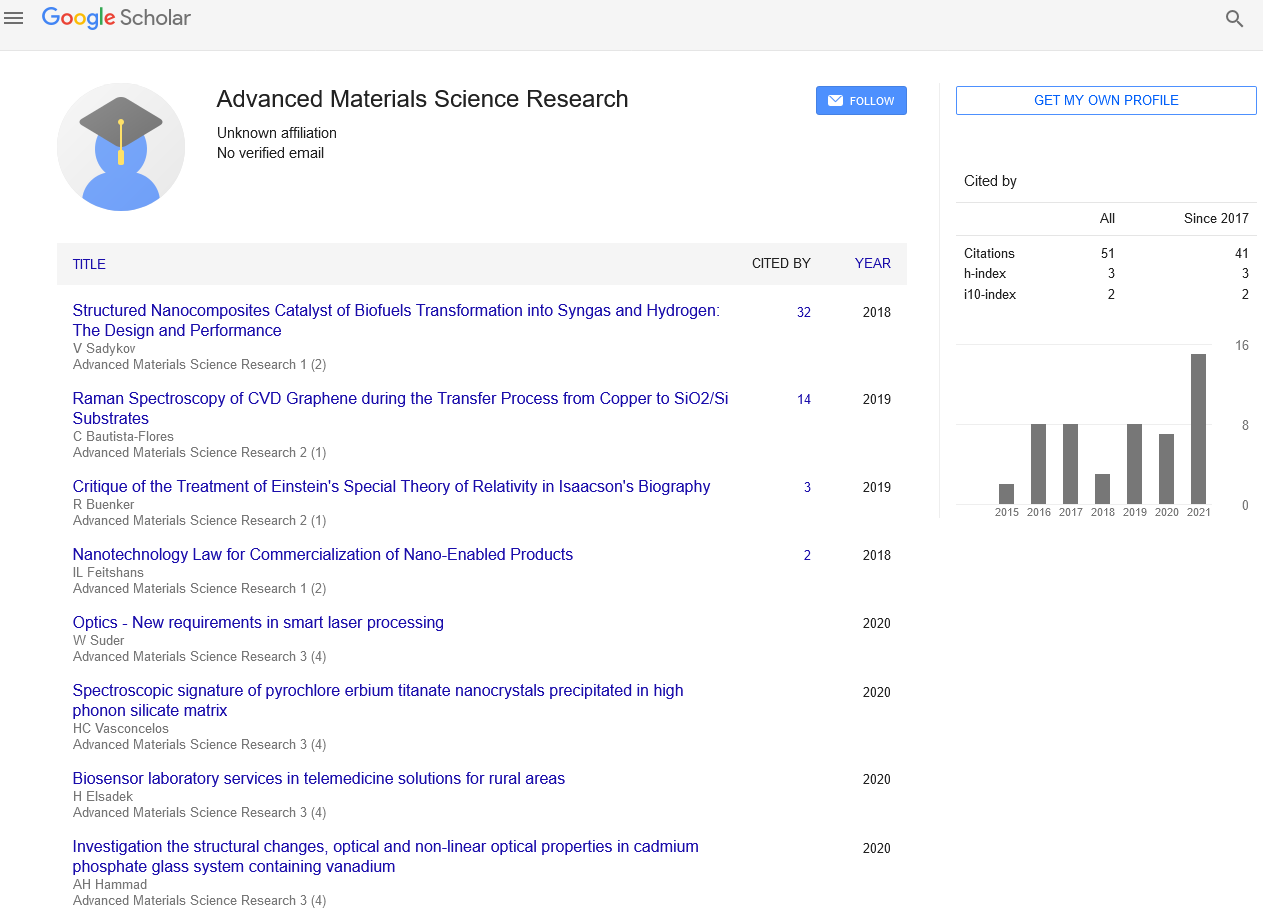Perspective - Advanced Materials Science Research (2024) Volume 7, Issue 5
Understanding Brittle Materials: Properties, Behaviour and Applications
- Corresponding Author:
- Rasheed Ahmmad
Department of Mechanical Engineering,
Bahria University,
Islamabad,
Pakistan
E-mail: Rasheed@gmail.com
Received:23-Sep-2024, Manuscript No. AAAMSR-24-147907; Editor assigned: 25-Sep-2024, PreQC No. AAAMSR-24-147907 (PQ); Reviewed: 09-Oct-2024, QC No. AAAMSR-24-147907; Revised: 15-Oct-2024, Manuscript No. AAAMSR-24-147907 (R); Published: 24-Oct-2024, DOI: 10.37532/aaasmr.2024.7(5).213-214
Introduction
Brittle materials are a significant focus in materials science and engineering due to their distinct behavior under stress and their crucial applications across various industries. Unlike ductile materials, which deform significantly before failure, brittle materials tend to break or fracture with little deformation. This article delves into the properties, behavior and applications of brittle materials, highlighting their importance and the challenges associated with their use.
Description
Properties of brittle materials
Brittle materials are characterized by their limited plastic deformation before fracture. This means they lack the ability to absorb substantial energy through deformation, leading to sudden and catastrophic failure. Some common properties of brittle materials include:
High compressive strength: Brittle materials often exhibit high compressive strength, meaning they can withstand substantial compressive forces without failing. However, their tensile strength is generally much lower.
Low ductility: Brittle materials do not undergo significant plastic deformation before breaking. This is in stark contrast to ductile materials, which can stretch and deform significantly under stress.
High hardness: Many brittle materials, such as ceramics and hard metals, possess high hardness. This means they are resistant to surface wear and scratching.
Clear fracture surfaces: When brittle materials fail, they typically exhibit well-defined fracture surfaces. These surfaces are often smooth and can reveal information about the failure mode and stress distribution.
Behavior under stress
The behavior of brittle materials under stress is quite different from that of ductile materials. Brittle materials tend to fail suddenly and without warning when subjected to stress. This behavior is often described through various mechanisms:
Fracture mechanics: The study of fracture mechanics is crucial for understanding brittle materials. This field examines how cracks and defects propagate through materials and how these processes lead to failure. Key concepts include stress intensity factors and fracture toughness.
Elastic behavior: Brittle materials typically exhibit elastic behavior up to their failure point. This means they deform reversibly under applied stress and return to their original shape once the stress is removed, up until the point of fracture.
Crack propagation: Brittle materials are prone to crack initiation and propagation. Once a crack forms, it can rapidly grow through the material under applied stress, leading to sudden failure.
Failure modes: Common failure modes for brittle materials include cleavage, intergranular fracture and trans granular fracture. Each mode has distinct characteristics and implications for material performance.
Examples of brittle materials
Several materials are classified as brittle due to their inherent properties and behavior. Some notable examples include:
Glass: Glass is a widely used brittle material known for its transparency and hardness. It is commonly used in windows, containers, and optical devices. However, its brittleness makes it prone to breaking under impact.
Ceramics: Ceramics, including porcelain and brick, are another group of brittle materials. They are valued for their hardness, wear resistance and high-temperature stability. Ceramics are used in a variety of applications, from pottery to engineering components.
Concrete: While concrete is a composite material with some degree of ductility, it is considered brittle in tension. This means that while it can handle substantial compressive forces, it is prone to cracking under tensile stress.
Applications of brittle materials
Despite their limitations, brittle materials have numerous applications due to their unique properties.
Construction: In construction, brittle materials like concrete are used extensively. While concrete is prone to cracking, its high compressive strength makes it ideal for building structures such as bridges, dams and buildings.
Electronics: Glass and ceramics are crucial in the electronics industry. Glass is used in screens and displays, while ceramics are employed in electronic components such as insulators and substrates. Their electrical insulating properties and high-temperature stability are valuable in these applications.
Cutting tools: Brittle materials like tungsten carbide are used in cutting tools and industrial machinery. Their hardness and wear resistance make them suitable for cutting, grinding and drilling operations.
Medical devices: Ceramics are also used in medical devices, including dental implants and prosthetics. Their biocompatibility, hardness and resistance to wear make them ideal for these applications.
Challenges and solutions
The use of brittle materials presents several challenges, primarily due to their tendency to fail suddenly and catastrophically.
Material design: Engineers often design brittle materials with specific geometric features or incorporate reinforcements to improve their toughness and resistance to crack propagation. For instance, fiber-reinforced composites can enhance the mechanical properties of brittle matrices.
Temperature management: Controlling the operating temperature can influence the brittleness of materials. For example, maintaining materials within a specific temperature range can help avoid sudden failures due to temperature-induced brittleness.
Innovative materials: Researchers are continuously developing new materials that combine the desirable properties of brittleness with improved toughness. For instance, advancements in nanotechnology and composite materials aim to create hybrids that offer better performance.
Conclusion
Brittle materials play a vital role in various industries due to their unique properties, despite their tendency to fail abruptly under stress. Understanding their behaviour, properties and applications is essential for optimizing their use and mitigating associated risks. Through careful design, material selection and on-going research, engineers and scientists continue to advance the applications of brittle materials, enhancing their performance and reliability in diverse contexts.

